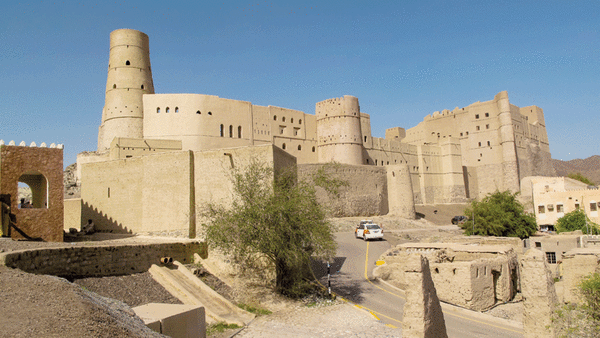


Oman boasts five Unesco World Heritage Sites, representing the country’s rich history and stunning landscapes. These sites, that include Bahla Fort, Archaeological Sites of Bat, Al Khutm, and Al Ayn, Aflaj Irrigation Systems, Land of Frankincense, and Ancient City of Qalhat, have immense potential to contribute to the country’s economic growth.
Oman can develop a sustainable tourism industry by promoting these sites and other cultural sites across the country, generating income and employment opportunities for local communities.
Sustainable tourism is one of the fastest-growing tourism sectors worldwide, according to the United Nations World Tourism Organisation (UNWTO), with the number of international tourists travelling to environmentally-friendly and socially-responsible destinations expected to reach 1.8 billion by 2030.
Sustainable tourism is estimated to be worth around 25 per cent of the global tourism industry, making it an important contributor to economic growth.
This trend towards sustainable tourism is expected to continue as travellers prioritise experiences that are culturally authentic, environmentally friendly, and socially responsible.
Oman can boost its economy and preserve its cultural and natural heritage for future generations by promoting its one-of-a-kind Unesco World Heritage Sites and other cultural attractions.
Encouraging private sector investment in sustainable tourism is one way for Oman to achieve this goal.
By offering incentives to protect the sites and enhance visitor facilities, Oman can strategically invest in infrastructure to attract global tourists and highlight its unique cultural and natural heritage.
For instance, Bahla Fort has the potential to be developed into a cultural tourism hub, attracting visitors interested in Islamic architecture, history, and culture.
The Archaeological Sites of Bat, Al Khutm, and Al Ayn can be leveraged to promote sustainable tourism, such as ecotourism, showcasing Oman’s natural beauty and biodiversity.
The Aflaj Irrigation Systems can be used to promote sustainable agriculture and water management, generating employment and promoting investments in the agricultural sector.
The Land of Frankincense can be a centre of heritage tourism, promoting Omani culture and tradition, such as the production of frankincense, handicrafts, and traditional medicine.
The Ancient City of Qalhat can be used to promote tourism, trade, and investment.
Oman’s Vision 2040 includes several goals for the tourism sector, including increasing the contribution of tourism to the country’s GDP, promoting sustainable tourism practices, and creating employment opportunities for Omani nationals within the tourism sector.
Additionally, the vision aims to develop world-class tourism infrastructure and promote Oman as a unique and diverse tourism destination, showcasing its cultural and natural heritage.
By leveraging its Unesco World Heritage Sites and other cultural attractions, Oman can achieve these goals and foster broad-based economic growth.
The promotion of sustainable tourism practices and the development of visitor facilities can create employment opportunities for local communities, generating income and supporting the country’s economic growth.
Oman’s Unesco World Heritage Sites showcase Oman’s unique history and natural beauty, offering priceless insights and appreciation.
These sites hold not only national but global importance, reflecting the richness and diversity of human history and nature.
By promoting Oman’s unique cultural and natural heritage, the country can position itself as a leader in sustainable tourism in the region, attracting visitors interested in responsible tourism practices and who seek out environmentally friendly experiences.
Through the development of a sustainable tourism industry, Oman can achieve its tourism goals and contribute to its broader vision of sustainable economic growth and development.
Oman Observer is now on the WhatsApp channel. Click here


